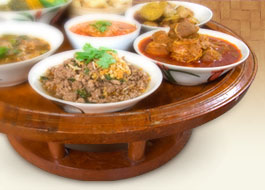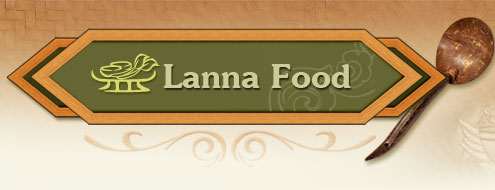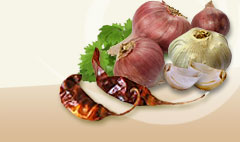Star Anise |
|
|
 | Illicium verum |
|
| |
 | Illiciaceae |
|
| |
 | Star anise |
|
| |
 | Dok poi kak, Dok chan paet klip (Wut Wuthithamwet, 1997, p. 278) |
|
| |
 | Small shrub. Leaves simple, reversed oval shape, acute tips. Flowers solitary, white. Fruit is star-like with 8 points, harvested when fully mature. (Wut Wuthithamwet, 1997, p. 278) |
|
| |
 |

No information on vitamin and mineral content. Lanna people use the seed pods in chili paste for lap or yam of all kinds (Pratan Nanchaisin, personal communication, July 3, 2007) |

The flavor is strong and warm and tastes strongly of licorice. It is used to relieve gastric wind, cause phlegm expectoration, as a tonic, to treat indigestion and a stuffy feeling. (Wut Wuthithamwet, 1997, p. 278) |
|
| |
 |
Wut Wuthithamwet. (1997). Saranukrom Samunphrai: Ruam Lak Pesatchakam Thai. Bangkok: Odean Store. (in Thai). |
|
| |
|
|




